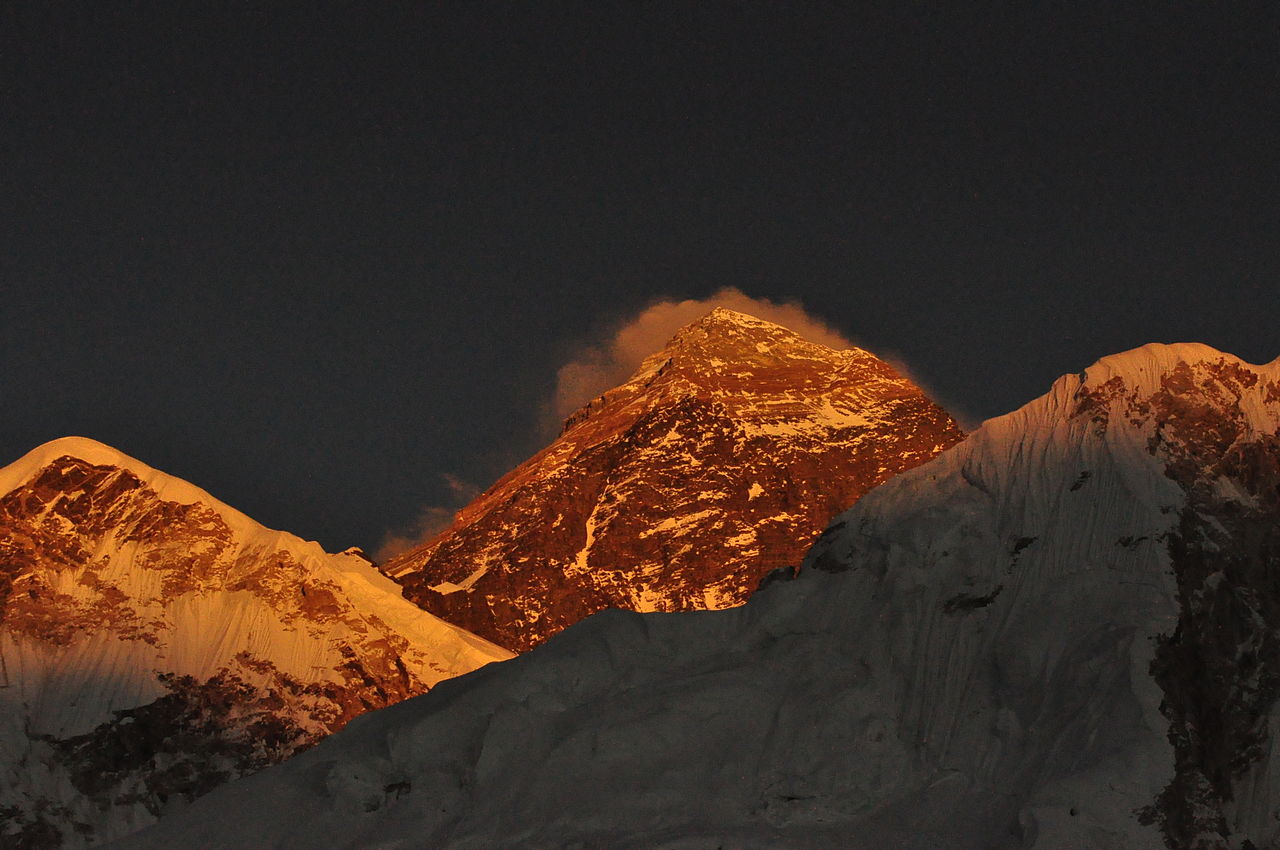While the fall climbing season in the Himalaya continues to slowly wind down for another year, it is already time to start thinking about the spring climbing season ahead. While the start of that season is still six months away, the prep work and planning is already well underway. With that in mind, Alan Arnette has posted a preview for Everest in 2015, providing readers with valuable insight on how climbing on the world’s highest peak will be both different, and the same, next year.
Alan begins his preview first remarking on how the 2014 season unfolded. As I’m sure most of you recall, a massive avalanche on the South Side of the mountain claimed the lives of 19 Sherpas, bring an end to climbing operations on the Nepali side of the mountain. Only a single non-Sherpa climber managed to summit from that side of the mountain this past spring, while on the North Side, about 125 climbers managed to top out. The political fallout from the spring continues to unfold in Nepal, and it will no doubt have long lasting repercussions on the climbing scene there. Exactly what that means for the long-term climbing conditions on Everest remain to be seen, but we already know that the Sherpas are looking for better working conditions, higher compensation, and increased benefits for their families should they die on the mountain. It is clear that the shadow of this past spring season will continue to hang over the mountain in 2015, and for many years to come.
One thing that is changing on Everest next year is the cost of climbing. Alan points out that a number of the larger commercial teams are raising prices – sometimes substantially. For instance, the Peak Freaks have raised their price by 22%, going from $39k to $49k. This is still a relative bargain in terms of Everest climbs, but it is worth noting none the less. RMI made an 11% jump, from $59k to $66k, while Jagged Globe, Altitude Junkies, 7 Summits Club, and IMG all hiked their costs up to a lesser degree as well.
For the most part, the reason for the raising of prices is directly due to an increased cost of doing business in Nepal. As Alan points out, the inflation rate in that country is roughly 9.4%, and that alone will have an impact on a company’s bottom line. But, climbing permits have also gone up in price, as has the cost of insurance that most mountaineers get when heading to the mountain. Those factors are all conspiring together to make Everest a more costlier venture then ever before, and the expenses are being passed on to the consumer.
Alan says that the real story however is the rise of cheaper options for climbing the mountain. These are coming in the form of locally-owned guide services that are finding ways to operate on Everest at less expense, most notably by paying workers a cheaper wage. These Nepali-owned and operated companies are offering Everest climbs for $25k-$35k, substantially less than what the foreign-owned companies are charging. A decade ago, 80% of the expeditions on Everest were led by guide companies that operated outside of Nepal. Alan predicts that in five years time, that number will have dropped to just 20%, as Nepali companies take over those operations.
Other interesting nuggets of information to note from Alan’s preview is that Himex (aka Himalayan Experience), the large commercial team run by Russell Brice, will return to the North Side of Everest for the first time since 2008. It seems Brice is hedging his bets for 2015, leading teams from both the North and South sides of the mountain. Meanwhile, the Alpenglow team will only operate on the North Side, as owner Adrian Ballinger says that no “credible” operator would continue to risk the icefall on the South Side.
These are just a few of the things that Alan touches on in his Everest 2015 preview. He also discusses the increased dangers of climbing on the South Side, particularly in and around the Khumbu Icefall. He mentions how unpredictable the weather can be, and how politics are continuing to play a role on how the season develops.
Overall, there is a lot to consider, even months before anyone heads to Kathmandu. With all of that said however, Alan also points out that most of the commercial teams are filling up fast, as climbers who were unable to make a true attempt last year are returning in droves, even as new mountaineers plan their expeditions as well. One thing is for certain, things are never dull when it comes to Everest, and I’m sure 2015 will be no different.
- Gear Review: The Xero Scrambler Mid is an Ultralight Hiking Shoe for Spring - March 1, 2023
- Gear Review: Yeti Roadie 48 Wheeled Cooler - August 18, 2022
- Kristin Harila Continues Pursuit of 8000-Meter Speed Record - August 16, 2022
